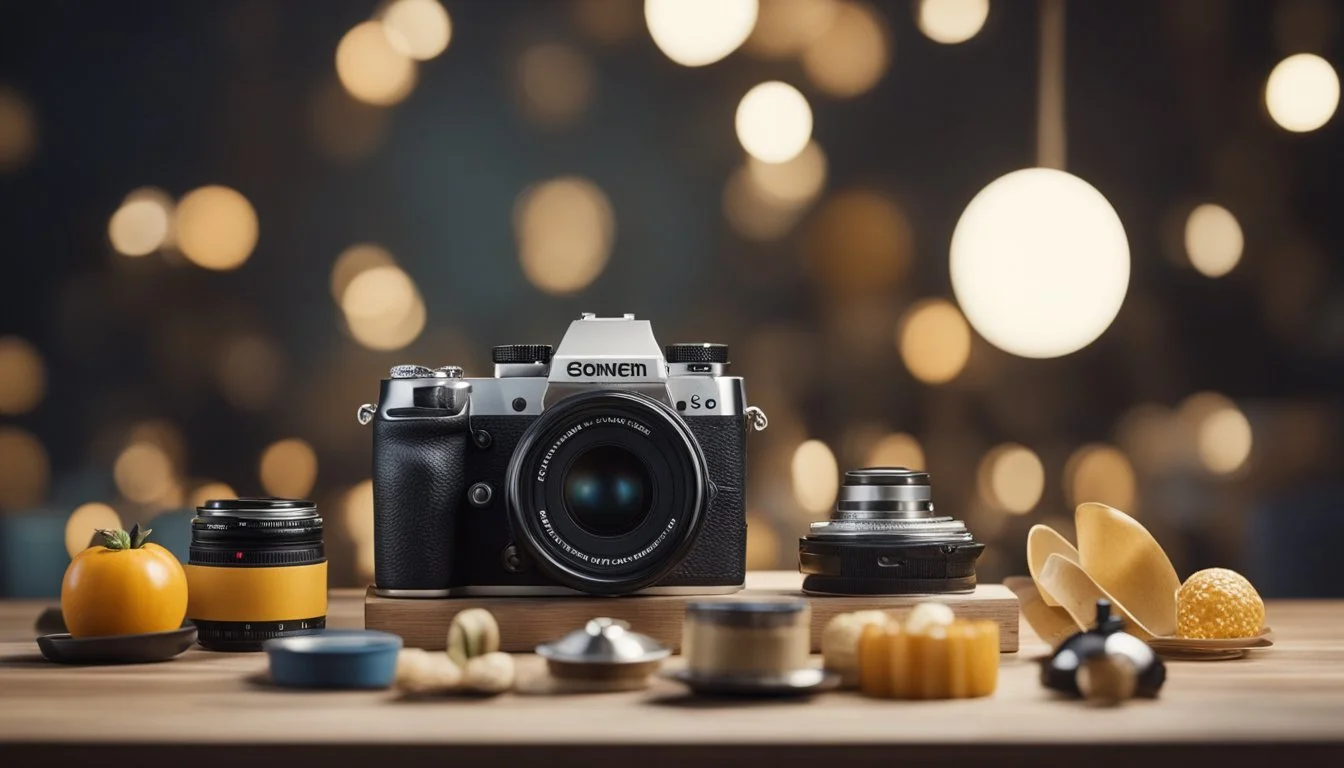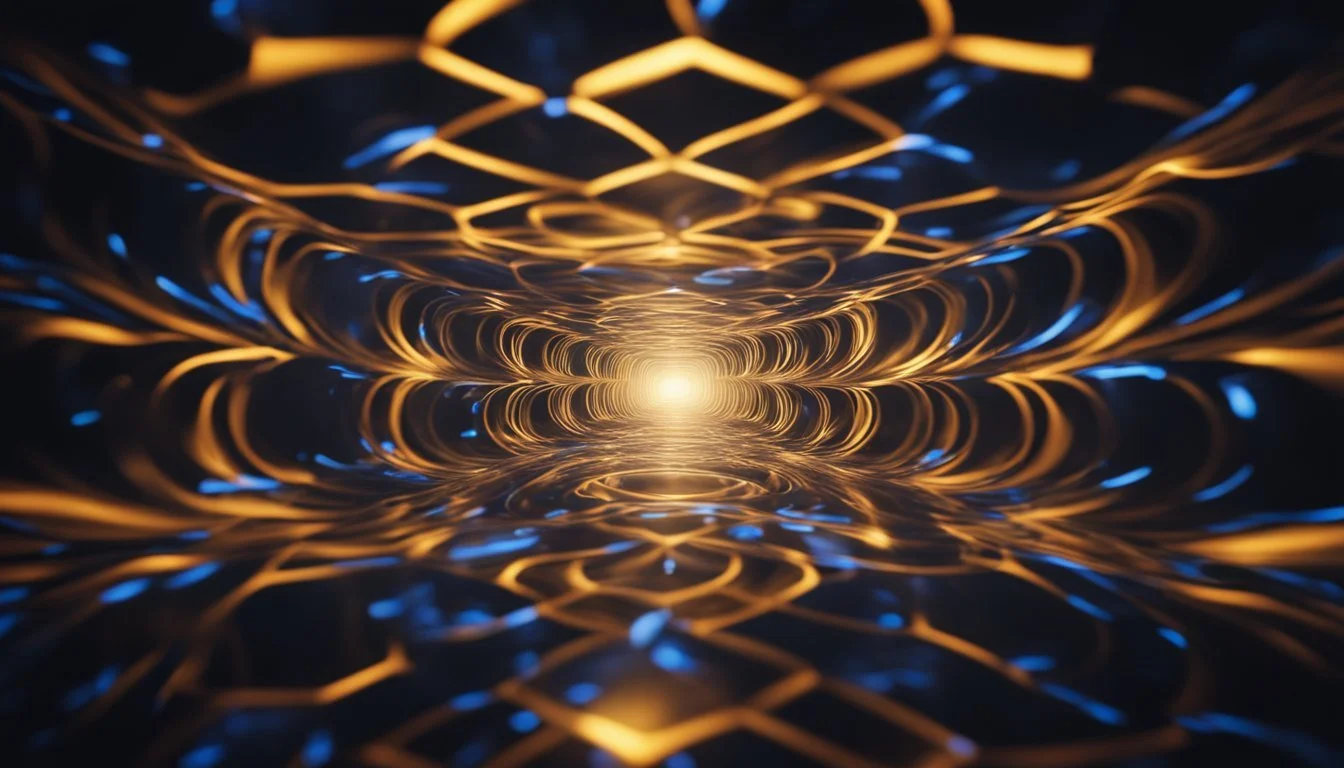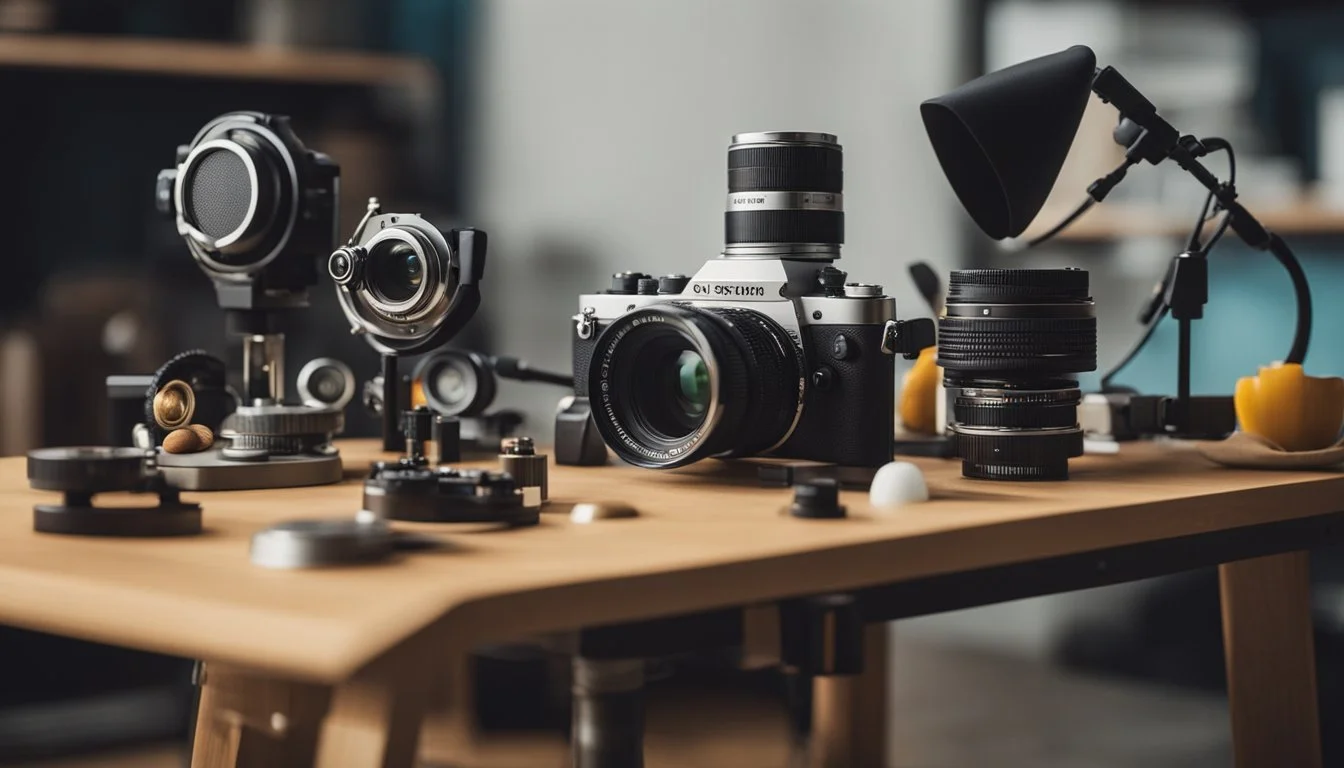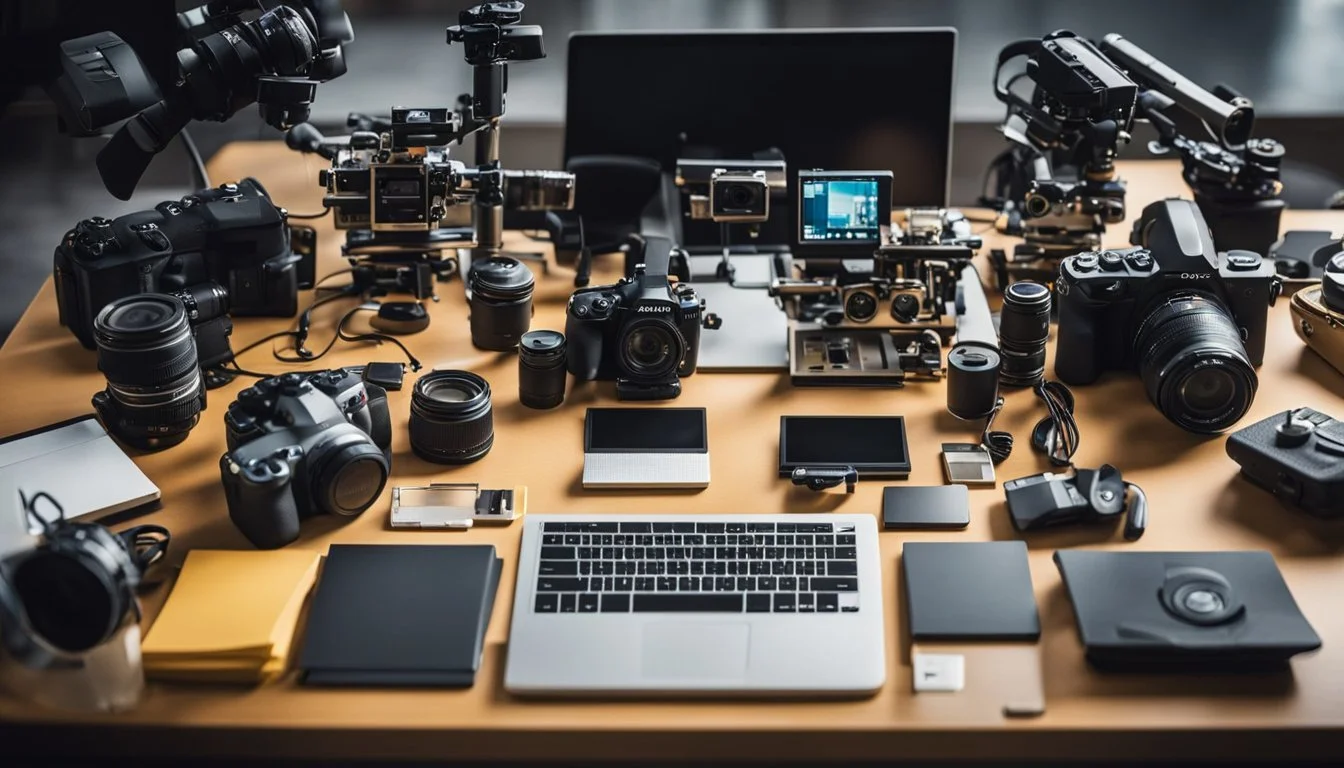7 Innovative Ways to Incorporate Stop-Motion into Your Films
Elevate Your Creativity
Stop-motion animation has carved a niche for itself in the world of filmmaking, offering a unique and captivating approach to storytelling. By manipulating inanimate objects frame-by-frame, filmmakers can create moving tales that captivate audiences with their tactile and visually engaging qualities.
Incorporating stop-motion techniques into your films can breathe fresh creativity into your projects, allowing for unparalleled artistic expression and innovative narrative possibilities. This article explores seven innovative ways to integrate this timeless technique, enhancing your films in both visual appeal and storytelling depth.
1) Use Claymation for Unique Characters
Claymation offers a distinct visual style that is hard to replicate with other techniques. It involves creating characters from clay and capturing their movements frame by frame. This method allows for a high degree of detail and creativity.
Characters in claymation can be sculpted in various shapes and sizes. The flexibility of clay allows animators to craft intricate features, such as facial expressions and physical gestures, adding depth to the storytelling.
Claymation is particularly effective for children's films and fantasy genres. The tactile feel of clay gives characters a tangible, lifelike quality that can captivate audiences. Additionally, this technique lends itself well to quirky, imaginative designs.
Creating custom clay characters can set a film apart. Each figure can be molded to fit specific story requirements, enabling unique visual storytelling. This versatility makes claymation a valuable tool for filmmakers seeking to stand out.
2) Time-Lapse to Show Progress
Time-lapse is an excellent technique to demonstrate progress over time. By capturing a series of frames at set intervals, filmmakers can condense hours or even days into a few seconds of compelling footage.
This method is particularly effective in showcasing the development of a project. Whether it's the construction of a building or the creation of a piece of art, time-lapse provides a visual narrative of the transformation.
Filmmakers can enhance the effect by using motorized motion control systems. These systems allow for smooth, dynamic movement of the camera, making the time-lapse more engaging.
Proper planning is crucial for successful time-lapse. The interval between shots should be carefully selected based on the speed of the subject’s changes.
Incorporating time-lapse into a film can add a unique and engaging element. The visual contrast between the still moments and the rapid movement helps emphasize the duration and effort involved in the process.
It's a technique that requires patience and precision but ultimately offers a rewarding way to highlight progress.
3) Mixed-Media Stop-Motion for Texture
Mixed-media stop-motion combines different animation techniques to create a unique visual experience. By integrating various materials, from paper cutouts to clay models, filmmakers can introduce a diverse range of textures into their projects.
Using diverse materials adds depth and richness to the visual narrative. For instance, combining fabric, paper, and found objects can create a tactile feel that digital techniques often lack.
This method also allows animators to experiment with both traditional and modern tools. For example, filming stop-motion sequences and then enhancing them with digital effects can yield striking results.
Mixed-media animation can appeal to audiences of all ages. Its hand-crafted look often evokes a sense of nostalgia and charm, making it particularly engaging for viewers.
4) Pixilation for Live Action
Pixilation is a stop-motion technique where live actors are used as frame-by-frame subjects. Each pose is captured incrementally, creating a jerky but deliberate movement when played back. This method infuses films with a surreal and unique visual style.
By using human actors in stop-motion, filmmakers can create whimsical and dream-like sequences. This approach can bring an unexpected twist to a narrative, captivating the audience with its distinct charm. It highlights the meticulous craft involved in animation.
Executing pixilation requires patience and precision. Actors must hold poses for each frame, which is then slightly adjusted. This allows filmmakers to manipulate real people in a way traditionally reserved for clay or puppet animation.
Pixilation can be used to blend reality with fantasy seamlessly. For instance, live-action scenes that transition into pixilated sequences can enhance storytelling by introducing an imaginative layer. This technique is ideal for visual comedies, surreal narratives, and artistic projects.
Incorporating pixilation into live action can also serve practical purposes. It can be used for visual effects that would be difficult to achieve through regular live-action filming. Objects and actors can interact in exaggerated and impossible ways, enhancing the creative scope of the film.
5) Paper Cut-Outs for Artistic Flair
Paper cut-out animation is a versatile technique that adds a unique artistic touch to stop-motion films. By using hand-drawn or printed images, filmmakers can create characters and scenes that have a distinctive, handcrafted feel. This method allows for a high level of creativity and customization.
One can start by drawing or painting characters and backgrounds on paper. Alternatively, images from old books, magazines, or digital prints can be used. These paper elements are cut out and positioned in scenes, then moved incrementally to create motion.
Filmmakers appreciate the ease of manipulating paper cut-outs. Characters and props can be adjusted effortlessly, allowing for smooth animations. The physicality of paper also gives a tangible quality to the visuals that can be hard to replicate digitally.
Incorporating paper cut-outs can also be a cost-effective approach. Materials such as paper, scissors, and adhesive are inexpensive and widely available. This accessibility makes it a popular choice for both amateur and professional animators.
To achieve the best results, ensure good lighting and a stable camera setup. These factors help maintain consistency and clarity throughout the animation. The simplicity of paper cut-outs can convey complex storytelling in a visually engaging way.
Film enthusiasts and creators often find that the textural quality of paper enhances the narrative depth, making the animation stand out. This technique is particularly effective for projects that aim for a whimsical, artistic, or nostalgic aesthetic.
6) Light Painting for Magical Effects
Light painting can introduce a captivating magical effect to stop-motion films. This technique involves using light sources to draw or paint within a single frame while the camera’s shutter remains open.
For successful light painting, set the camera's ISO to 100 and use the bulb mode on the shutter speed. Adjust the aperture to control exposure.
Actors or objects can hold light sources to create glowing trails or outlines. This can be especially effective in fight scenes or magical sequences.
Experimentation with different colors and light intensities can yield diverse effects. Three primary light types (key, fill, and backlight) contribute significantly by illuminating various parts and adding depth.
Incorporating light painting allows filmmakers to explore creative possibilities and produce visually enchanting scenes.
7) Sand Animation for Unique Storytelling
Sand animation is a distinct and creative approach that adds a touch of uniqueness to stop-motion films. This technique involves manipulating sand to create ever-changing images and scenes. The transformation of the sand creates a fluid narrative, capturing the audience's attention with its constant evolution.
One of the key strengths of sand animation is its flexibility. Artists can easily transition from one scene to another by simply reshaping the sand. This allows for seamless storytelling that feels both organic and mesmerizing. Each movement can convey new emotions and storylines, making it ideal for dynamic visual storytelling.
Sand animation also provides a tactile and handcrafted aesthetic. The physical manipulation of sand adds an element of authenticity and human touch that is visually appealing. Viewers are often drawn to the texture and the intriguing process of seeing shapes and forms come to life under the artist's hands.
Besides, sand animation can be used to create intricate and detailed scenes that might be difficult to achieve with other stop-motion techniques. The versatility of sand allows for easy creation of both abstract and representational imagery, making it a powerful tool for filmmakers aiming to tell unique and engaging stories.
Emphasizing the natural and fluid movement, sand animation can evoke strong emotional responses. The technique's inherent unpredictability and constant transformation keep the audience engaged, as they are eager to see what comes next. This makes it a compelling method for bringing innovative and captivating stories to life.
Understanding Stop-Motion Techniques
Stop-motion animation combines traditional and modern filmmaking methods to create captivating, frame-by-frame movements. It's essential to grasp its historical context and core principles to fully appreciate its application.
History and Evolution
Stop-motion has roots stretching back to the late 19th century, with pioneers like J. Stuart Blackton and Albert E. Smith. They experimented with frame-by-frame photography to animate objects. Early works often involved simple sequences, bringing to life everyday items.
The 20th century saw significant advancements. Willis O’Brien's work on The Lost World (1925) showcased the potential of stop-motion in feature films. Ray Harryhausen, a student of O’Brien, furthered the techniques with iconic movies like Jason and the Argonauts (1963).
In the modern era, digital technology enhances stop-motion production. Films like The Nightmare Before Christmas (1993) and Coraline (2009) blend traditional methods with computer-aided design to achieve stunning visuals.
Basic Principles
Stop-motion animation involves capturing individual frames of an object that is moved incrementally. This sequence, when played back, creates the illusion of continuous motion. The process requires meticulous planning and execution.
Key steps involve:
Storyboarding: Outlining the sequence to map out movements and actions.
Sculpting: Creating characters and sets, often from materials like clay or plasticine.
Lighting: Consistent lighting ensures uniformity across frames.
Photography: Using a camera to capture each incremental movement.
Editing: Compiling and timing the frames to create fluid motion.
By mastering these principles, filmmakers can craft seamless and engaging stop-motion animations.
Technical Requirements for Stop-Motion
Creating impressive stop-motion animation requires specific equipment and software tools. Knowing what tools you need can significantly enhance efficiency and quality.
Essential Equipment
For producing stop-motion animation, certain equipment is crucial. A high-resolution camera is the backbone. DSLR cameras are often favored due to their superior image quality and manual settings.
A tripod ensures stability and consistency across frames. Lighting is also critical—adjustable LED lights help maintain consistent illumination and prevent flickering between frames.
A capture device or a remote camera control unit allows frame-by-frame shooting without touching the camera, helping avoid shifts or blurs.
Modeling materials like clay, plasticine, and other flexible materials are useful for creating characters and sets. An animation stage or a well-designed set with a stable background serves the animation's backdrop.
Software Tools
Software tools are essential for compiling frames and adding effects. Dragonframe is a leading software for stop-motion animation, known for its precise control and user-friendly interface.
Adobe After Effects and Adobe Premiere Pro are beneficial for post-production, enabling the addition of special effects and seamless video editing.
For sound design, Audacity provides robust audio editing capabilities. Stop Motion Studio is a more accessible tool ideal for beginners, offering basic animation functionalities. Other notable mentions include iStopMotion and FrameByFrame which offer unique features for both beginners and professionals.
Each software tool serves a distinct purpose, from capturing and organizing frames to detailed post-production work, ensuring that the animation process runs smoothly from start to finish.
Blending Stop-Motion with Other Filmmaking Techniques
Using stop-motion alongside other filmmaking techniques can bring unique visual effects and new dimensions to a film. By integrating live-action footage and combining CGI with stop-motion, filmmakers can create distinctive, engaging experiences.
Integrating Live-Action Footage
Combining live-action footage with stop-motion animation can produce striking visual contrasts and enhance storytelling. To achieve this, filmmakers often shoot the live-action scenes first, establishing the setting and main action. They then incorporate stop-motion animated elements, either by compositing the animated frames into the live-action footage during post-production or by using in-camera techniques.
One effective approach involves rotoscoping, where animators trace over the live-action footage frame by frame, blending the animation seamlessly with real-life movements. This technique can be seen in films like "The Lego Movie," where live-action and stop-motion animation come together for a cohesive narrative experience.
Combining CGI and Stop-Motion
Integrating CGI with stop-motion allows for greater creative flexibility and visual appeal. Filmmakers can use CGI to animate complex backgrounds, create special effects, or enhance characters' expressions, making the overall animation more dynamic and captivating.
For instance, in "Kubo and the Two Strings," traditional stop-motion techniques are augmented with CGI to provide fluidity in the elaborate and detailed scenes. By combining both techniques, the filmmakers achieve a richer visual texture, making the storyline more immersive.
This hybrid approach not only helps in overcoming limitations inherent in stop-motion but also adds layers of depth and realism that would be difficult to achieve using stop-motion alone.






